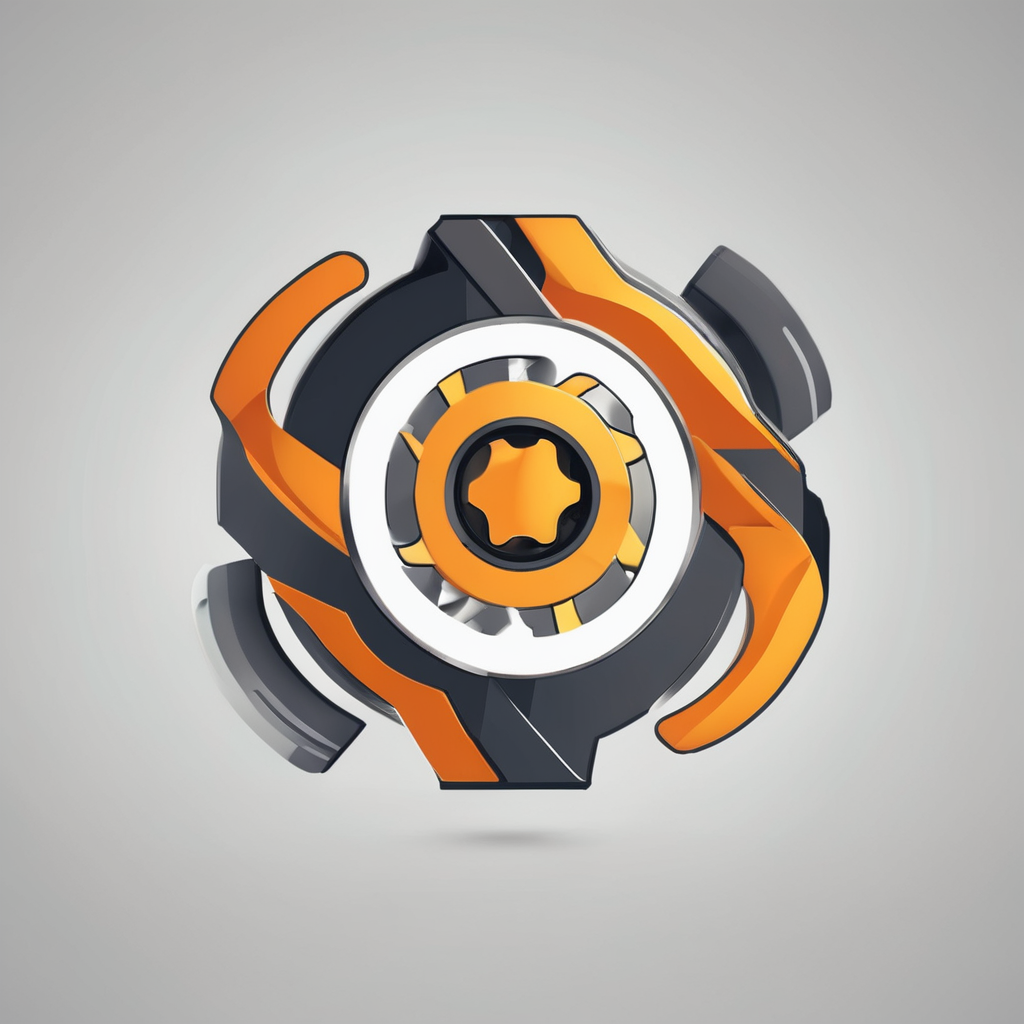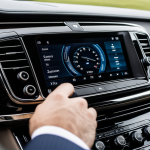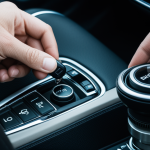Step-by-Step Installation Guide for a Modern Infotainment System in Your British Classic
Installing a modern infotainment system in a British classic car requires careful planning and precision. Begin with a thorough system assessment and preparation. Check your car’s dashboard, wiring compatibility, and measure space available for the new unit. This step ensures smooth integration without compromising your car’s vintage look.
Next, focus on the removal of original components. Carefully detach the existing radio or dashboard elements to avoid damaging interiors. Using appropriate tools designed for classic cars helps maintain the integrity of trim and upholstery during disassembly. This process demands patience to protect precious wood veneer, leather, and fittings intrinsic to your classic.
Topic to read : The Definitive Guide to Expertly Maintaining Cooling Systems in High-Performance British Cars
When fitting the new infotainment unit, choose discreet mounting locations to keep the traditional aesthetics intact. Some enthusiasts mount units behind original panels or utilize custom brackets that mimic factory installations. Properly secure wiring, and avoid visible modifications. This step-by-step guide promotes a stealthy, reversible upgrade for your British classic car, combining the best of vintage charm with contemporary technology.
Step-by-Step Installation Guide for a Modern Infotainment System in Your British Classic
Installing a modern infotainment system into a British classic car demands careful planning and delicate handling to maintain the vehicle’s original charm. Begin with a thorough system assessment, identifying the required components and verifying compatibility with your car’s existing wiring and dashboard layout. Preparation essentials include gathering tools such as panel removers and wiring testers to avoid damaging trim or interiors.
Additional reading : Mastering Comfort: The Ultimate Guide to Dual-Zone Climate Control in Your British Luxury Sedan
The process starts by safely removing original components, which often involves detaching the factory radio or dashboard panels. Use gentle, precise methods to prevent harm to fragile wood or leather finishes. Next, mount and fit the new infotainment unit. Aim for a discreet installation that retains the classic aesthetics while incorporating modern functionality. For example, choose a unit with a classic façade or hide advanced features behind original panels.
Throughout the step-by-step guide, prioritize preserving interior integrity. This ensures the car’s vintage appeal remains intact, even as it gains the convenience of today’s technology. By following these steps carefully, enthusiasts can enjoy modern features without sacrificing their British classic’s timeless style.
Essential Tools, Parts, and Compatibility Considerations
Choosing the right tools for car installation is crucial to a smooth modern infotainment system installation in your British classic car. Essential tools include precision screwdrivers, wire strippers, a multimeter, and panel removal kits designed to avoid damage to delicate interiors. Using vintage-style hardware or adaptors can maintain the car’s period authenticity while accommodating new components.
Selecting infotainment system parts compatible with a classic British vehicle’s wiring and dashboard is equally important. Many classic cars have 12-volt systems but lack CAN bus networks found in modern vehicles, so units designed with universal compatibility or customizable wiring harnesses work best. Ensuring your chosen unit fits within existing dashboard cavities preserves aesthetic integrity.
When sourcing parts, consider units that allow discreet mounting, often achievable by choosing compact or modular systems. Utilizing tools like wiring diagrams and measuring equipment aids accuracy in placement and electrical integration. Maintaining original trim and avoiding irreversible modifications safeguard your car’s heritage while upgrading its functionality.
Step-by-Step Installation Guide for a Modern Infotainment System in Your British Classic
Installing a modern infotainment system in a British classic car begins with a detailed system assessment and preparation. Evaluate your car’s existing wiring and dashboard compatibility, as many classic vehicles lack standard connectors. This step helps determine if adapters or rewiring are necessary, ensuring a smooth modern infotainment system installation.
Removing original components should be done with care to avoid damaging delicate interiors. Use specialized trim tools to gently release panels, preserving original wood and leather finishes. Avoid forcing any elements, which can cause costly damage to your vintage interiors.
Mounting the new infotainment unit discreetly is vital to maintain the classic car’s aesthetic. Choose compact units designed for stealth installations or those that fit behind original panels. Secure all wiring carefully, tucking cables to prevent visible alteration. Following this step-by-step guide preserves your British classic’s charm while integrating modern technology effectively.
Step-by-Step Installation Guide for a Modern Infotainment System in Your British Classic
Begin your modern infotainment system installation with a detailed system assessment and preparation. Measure available dashboard space precisely and verify the wiring harnesses’ compatibility with your British classic car. Gather all necessary tools, including panel removers and wire testers, to ensure a smooth process that respects delicate interiors.
Next, safely remove original components by carefully detaching the factory radio or trim. Avoid using excessive force to protect the classic wood veneer, leather, and upholstery. Using specialized tools helps prevent damage and supports a reversible upgrade.
When mounting the new infotainment unit, opt for discreet placement to maintain the vehicle’s vintage look. Consider using custom brackets or hiding the unit behind existing panels. Secure all wiring meticulously, ensuring connections comply with the car’s electrical system without visible modifications. Following this well-structured step-by-step guide helps enthusiasts successfully upgrade their British classic car with modern technology while preserving original aesthetics.
Step-by-Step Installation Guide for a Modern Infotainment System in Your British Classic
Begin the modern infotainment system installation with a detailed system assessment to understand your British classic car’s wiring layout and dashboard constraints. Since classic cars often lack standardized connectors, identify if adapter cables or rewiring are necessary. Accurate measurements and evaluating dashboard cavities help select an infotainment unit that fits seamlessly.
Next, carefully remove original components to protect interiors. Use appropriate trim removal tools designed for classic cars to avoid damaging wood, leather, or chrome. Avoid excessive force during this process, which can crack or deform valuable fittings. Taking time here is essential for preserving the car’s original condition.
When mounting the new unit, opt for discreet fitting locations that keep the classic dashboard appearance intact. Many choose units that fit behind existing panels or employ customizable brackets. Secure wiring meticulously, routing cables out of sight and preventing any strain that could cause future disconnection or wear. This step-by-step guide ensures your upgrade blends modern functionality with your British classic’s timeless style.
Step-by-Step Installation Guide for a Modern Infotainment System in Your British Classic
A successful modern infotainment system installation in your British classic car starts with meticulous system assessment and preparation essentials. Accurately measure dashboard space and verify existing wiring compatibility; classic cars often require custom adapters due to unique harnesses. This precise groundwork prevents issues during later stages.
When removing original components safely, utilize panel removers and trim tools designed to protect delicate interiors—wood veneer, leather, and original dashboard finishes demand gentle handling. Avoid force to prevent irreversible damage. Carefully disconnect wiring harnesses, labeling connectors for easier reassembly.
During the mounting and fitting of the new infotainment unit discreetly, select compact units or custom brackets to preserve the vintage aesthetic. Position the system behind factory panels or within unused compartments to maintain authenticity. Secure wiring with proper insulation and routing to avoid visible modifications. This step-by-step guide ensures a seamless blend of old-world charm with modern technology, maintaining your British classic car’s integrity throughout the entire installation process.
Step-by-Step Installation Guide for a Modern Infotainment System in Your British Classic
A successful modern infotainment system installation in a British classic car starts with a comprehensive system assessment and preparation. First, evaluate your vehicle’s wiring layout and dashboard dimensions precisely. Many British classics have unique electrical systems without standardized connectors, so identifying necessary adapters is vital. Use measuring tools to confirm the new unit’s fit, preventing costly adjustments later.
Next, remove original components carefully. Employ specialized trim tools to detach radios or panels gently, safeguarding precious wood and leather interiors. Avoid forceful maneuvers which may crack or damage vintage fitting. This step ensures your classic’s integrity remains intact during the upgrade.
Finally, focus on mounting and fitting the new infotainment unit discreetly. Opt for compact systems designed for stealth installations or ones that fit behind existing panels, maintaining your car’s authentic look. Secure all wiring meticulously, routing cables out of sight and preventing stress points that could disrupt future functionality. This step-by-step guide balances modern convenience with timeless style, making the upgrade seamless for any British classic car owner.
Step-by-Step Installation Guide for a Modern Infotainment System in Your British Classic
A precise system assessment and preparation is the foundation of any successful modern infotainment system installation in your British classic car. Start by verifying wiring layouts against manufacturer specifications, noting the absence of standardized connectors common in vintage vehicles. This step lets you identify if adapter cables or custom wiring harnesses are required, preventing costly reworks.
When removing original components safely, use trim removal tools crafted for classic cars, ensuring delicate wood and leather interiors remain intact. Gentle maneuvers prevent cracks or wear to the dashboard and upholstery. Label wiring connectors meticulously for easier reassembly and troubleshooting.
For mounting and fitting the new infotainment unit discreetly, select compact models or those designed for stealth installation behind existing panels. This maintains the car’s timeless look. Secure wiring with proper insulation and neat routing to avoid visible modifications or stress on connectors. Following this detailed step-by-step guide balances classic charm with modern technology, allowing your British classic car to embrace convenience while preserving integrity.
Step-by-Step Installation Guide for a Modern Infotainment System in Your British Classic
A successful modern infotainment system installation starts with a thorough system assessment and preparation. Assess your British classic car’s dashboard space and wiring layout meticulously. Classic cars often differ in harness configurations, so identify if any custom adapters or rewiring are necessary to ensure compatibility. Precise measurements prevent fitting issues later.
Next, focus on removing original components safely. Use specialized trim and panel removal tools designed for vintage interiors to avoid damaging wood veneer, leather, or chrome details. Detach the factory radio and disconnect wiring gently, labeling connectors to simplify reassembly. This careful approach preserves the car’s original finishes.
When mounting and fitting the new infotainment unit discreetly, select compact systems or those designed for stealth installations that fit behind existing panels. Utilize custom brackets if required to maintain dashboard authenticity. Secure wiring carefully to prevent damage or visible modifications. Following this step-by-step guide ensures a seamless blend of modern technology and your British classic car’s timeless style.
Step-by-Step Installation Guide for a Modern Infotainment System in Your British Classic
A meticulous system assessment and preparation is crucial for successful modern infotainment system installation in your British classic car. Begin by mapping your vehicle’s wiring layout and confirming dashboard measurements to identify if custom adapters are required. This avoids costly mistakes in later assembly stages.
When removing original components safely, use trim removal tools designed specifically for classic cars to prevent damage to sensitive wood veneer and leather interiors. Gently disconnect wiring harnesses, labeling them to ease reassembly. The goal is to protect the car’s vintage essence without compromising the installation quality.
For mounting and fitting the new infotainment unit discreetly, choose compact or modular systems that fit behind existing panels or within original dashboard cavities. Utilize custom brackets to maintain secure positioning without visible alterations. Routing wiring carefully avoids strain and preserves the authenticity of your British classic car while upgrading its technology. This step-by-step guide ensures a seamless, reversible installation that honors both aesthetics and function.
Step-by-Step Installation Guide for a Modern Infotainment System in Your British Classic
Start your modern infotainment system installation by conducting a thorough system assessment and preparation to understand your British classic car’s unique wiring layout and dashboard constraints. Precisely measure available space and identify if adapters or custom harnesses are needed, since many classic cars differ from modern standardized systems. This initial step prevents fitting or electrical compatibility issues later on.
When removing original components safely, use specialized trim tools meant for vintage interiors to avoid damage to wood veneer, leather, or chrome finishes. Gently detach factory radios and carefully label wiring connections to facilitate reassembly and troubleshooting. Avoid applying force that could crack or deform delicate interiors, protecting your classic’s original condition.
For mounting and fitting the new infotainment unit discreetly, select compact models designed for stealth installations, or fit the system behind original panels to maintain aesthetic authenticity. Employ custom brackets if necessary, and secure wiring neatly out of sight with proper insulation to prevent wear or disconnections. This step-by-step guide combines careful handling with technical precision, enabling a seamless upgrade that preserves your British classic car’s timeless style.
Step-by-Step Installation Guide for a Modern Infotainment System in Your British Classic
Begin the modern infotainment system installation with a detailed system assessment and preparation essentials. Precisely measure your British classic car’s dashboard space and carefully analyze the existing wiring harness. Since many classic models have non-standard connectors, determine if adapters or custom wiring are required to ensure compatibility. This pre-installation step prevents unforeseen issues during fitting.
Next, remove original components safely without damaging interiors. Employ specialized trim tools designed for vintage cars to gently detach factory radios, panels, and wiring. Avoid forcing any part to protect sensitive materials like wood veneer and leather, preserving your car’s authentic finishes. Label disconnected wiring carefully to simplify reassembly.
For mounting and fitting the new infotainment unit discreetly, choose compact or modular systems tailored for stealth installation. Position the unit behind original panels or within unused dashboard cavities to maintain the classic aesthetic. Secure all wiring meticulously, routing cables out of sight to prevent strain and visible alteration. This step-by-step guide balances modern technology with your British classic car’s timeless charm.
Step-by-Step Installation Guide for a Modern Infotainment System in Your British Classic
A successful modern infotainment system installation begins with a thorough system assessment and preparation to accommodate the unique wiring and dashboard constraints of your British classic car. Start by measuring available space accurately and checking if existing wiring harnesses require adapters or custom connectors, since compatibility issues can arise with vintage electrical systems.
When removing original components safely, employ specialty trim and panel removal tools designed for classic vehicles to avoid harming delicate wood, leather, or chrome finishes. Gently detach the factory radio and disconnect wiring carefully, labeling connectors to aid reassembly. This preserves your car’s interior and prevents costly damage during the upgrade.
For mounting and fitting the new infotainment unit discreetly, select compact models or customized brackets that fit behind original panels. Positioning the unit invisibly maintains the car’s timeless charm. Secure wiring with proper insulation and route cables out of sight to prevent wear or disconnections. This step-by-step guide ensures a reversible installation that blends modern functionality with the authenticity of your British classic car.
Step-by-Step Installation Guide for a Modern Infotainment System in Your British Classic
Start your modern infotainment system installation with a thorough system assessment and preparation essentials. Accurately measure the dashboard space in your British classic car and analyze the wiring layout. Since many vintage vehicles lack standardized connectors, identify if custom adapters or rewiring are necessary. This upfront evaluation helps prevent fitting issues during later steps.
When removing original components safely, use trim tools designed specifically for classic cars to avoid damaging delicate interiors such as wood veneer, leather, and chrome fittings. Gently detach factory radios and panels, labeling all wiring connections clearly for simpler reassembly. Avoid applying force to preserve your car’s authentic finishes.
For mounting and fitting the new infotainment unit discreetly, select compact systems or ones designed for stealth installation to maintain the vehicle’s classic look. Position the unit behind original panels or in unused dashboard cavities. Secure wiring meticulously with proper insulation and neat routing to avoid visible alterations or strain. Following this detailed step-by-step guide ensures your upgrade blends modern convenience with the timeless elegance of your British classic car.





